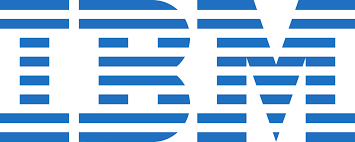The Complete Beginners Guide. MySQL Server DBMS and AWS RDS
Beginner to Advanced Guide to Learn MySQL with MySQL Workbench and AWS. Covering All Basics to Advanced with Examples

Lectures -59
Resources -1
Duration -6 hours
Lifetime Access

Lifetime Access
30-days Money-Back Guarantee
Get your team access to 10000+ top Tutorials Point courses anytime, anywhere.
Course Description
Hello and welcome to my new course 'The Complete Beginners Guide. DBMS with MySQL server'.
You already know that in this information technology age 'data' is everything. A Database is the place where this information is stored in tables. There are two types of databases. A structured database and also there is an unstructured or no-sQL kind of database. We will see the SQL or the Structured Query kind of database. The most popular one among the SQL databases is the MySQL server.
Here is an overview of the sessions that are included in this course.
In the first session, we will have an introduction to databases. Then we will see the concepts of SQL or Structured Query Language which is used in RDBMS.
Then we will see different types of SQL commands. Then the database objects And in the next session, we will move on to the basics of MySQL server. We will see how we can install the free and open-source version of MySQL server into your computer and then we will download the MySQL Workbench, which is a tool and an interface. And later we will connect MySQL Workbench with our MySQL server process that is running in the background.
Then we will proceed with the basic SQL database operation. We will create a database, we will list the database in the server, then we can select a database using the USE command and finally will try demonstrating deleting a database using the DROP command. There is also an option to take a backup of the database.
Then we will move on with SQL basic table operations. We will have an overview of the data types of SQL. Then we will have an overview of different SQL constraints and the difference between a primary key and a foreign key. And finally, we will start creating a table in our database. We will create it, we will try to delete it. We will try to alter it. And then we will move on to describing the table schema and inserting data into the table. Deleting data from the table, modifying data, and then.. fetching the data all these basic table operations will be dealt with in this session.
And then we will go ahead and import a sample database. It's a free sample database called the Northwind Traders database from Microsoft. We will download it and we will import that into our MySQL server. Later we will proceed with the basic aggregate functions of SQL. We will see what is an aggregate function and then we will proceed with each and every aggregate function.
And then we will proceed with the basic clauses of SQL. We will see what is a clause and different
clauses. The first is the istinct clause, Group-by, Where clause, then Order-by, Having clause, Select and Grouping-sets. We will also have different examples for each and every clause that we learn. Then we will proceed with the basic operators of the MySQL server. The basic operators include Comparison operators Union operators, Intersect, In operator, Not, Between, Is Null, and Not Null. Then we have the Like, Exists operator. We will try different examples.
Then we will have an elaborate session with the MySQL server data types. The popular ones. Then we will have a detailed session regarding the constraints in the MySQL server. The constraints include the Primary key, then the Foreign key, Check then Unique then Default, and Not Null constraints. The relationship between these tables and their columns is defined using a standard notation called the ER or Entity Relationship diagram. We will see what is an Entity, then we will see what is an Attribute and also what is the relationship in the ER diagram.
Then we will proceed with the popular string functions or string manipulation functions in MySQL server. These functions we can use to process a string inside our MySQL server. We will also have an overview of the popular SQL Date and Time functions which are used to manipulate date and time data inside MySQL server. And then we will proceed with the popular SQL mathematical operations. And also examples to demonstrate all these functions and then we will proceed with the SQL conversion functions which are used to perform data conversion inside SQL. We will try examples for these functions.
And then we will move on to an important topic called SQL Joins. This join clause in SQL will enable us to connect between different tables that are linked by some common key. The popular ones are Inner join, Outer join, Cross Join and Self Join We will see detailed examples, and demonstrations for each of these joins and then we will proceed with Stored Procedures in the MySQL server. A block of re-usable SQL statements that are stored in the Server.
We will see an overview of the stored procedure. Then we will see how we can create a stored procedure. Then execute how we modify, and delete the stored procedure and also we see how we can pass input parameters. Return the processed parameters from the stored procedure.
And then we will see what is a sub-query inside the MySQL server. We will see an overview of the sub-query. We will try different examples of how we can create a sub-query. Then we will proceed with Views in the MySQL server. We will see an overview of the views in SQL. Then, how we can create a view? We will try an example of how we can call the already-created view. Then we will move on with MySQL server triggers. Different types of SQL triggers. We will try them with examples.
And then We will see different types of normalization. And then we will be discussing the security risk called as the SQL Injection attack and the preventive measures that we can take. We will see a few demonstrations of how a hacker can include an SQL injection statement into our MySQL server and get the data he wants.
In the final session, we will see how we can configure an Amazon Web Service RDS or Relational Database Service. We will set the security groups for RDS and we will connect from our MySQL workbench to our remote db server. Then we will perform the normal SQL operations.
And that's all about the topics which are currently included in this quick course. The sample database and the materials have been uploaded and shared in a folder. I will include the link to download them in the last session or the resource section of this course. You are free to use that with no questions asked.
Also, after completing this course, you will be provided with a course completion certificate which will add value to your portfolio.
So that's all for now. See you soon in my classroom.
Happy Learning !!
Goals
- Learn MySQL Server Database Management Basics to Advanced. With sessions to host DB in AWS RDS server.
- MySQL commands and MySQL Workbench.
- Start from the basic to the advanced MySQL database.
- Combining both SQL commands and MySQL UI and sessions on how to host the DB in Amazon Web Service.
Prerequisites
- The computer which can install MySQL Server and MySQL Workbench. Your Laptop or PC will be fine.

Curriculum
Check out the detailed breakdown of what’s inside the course
Course Introduction and Table of Contents
1 Lectures
-
Course Introduction and Table of Contents 06:57 06:57
Introduction to Database and Database Management Systems
1 Lectures

Introduction to SQL and NoSQL Databases
1 Lectures

Installing MySQL Server and MySQL Workbench
1 Lectures

Introduction to Types of SQL Commands
1 Lectures

Basic Database Operations in MySQL
1 Lectures

Export and Import Database
1 Lectures

User Management and Privilege grant and revoke in MySQL
1 Lectures

Table Operations - Overview of SQL Data Types and Constraints
1 Lectures

Create Alter Drop Table using MySQL Workbench
1 Lectures

Create and Show Table using MySQLCommands
1 Lectures

Alter Table using MySQLCommands
1 Lectures

Inserting Data into the Table
1 Lectures

Updating Data from the Table
1 Lectures

Delete and Drop
1 Lectures

Importing Northwind Database
1 Lectures

Min and Max Aggregate Functions
1 Lectures

Sum and Avg Aggregate Functions
1 Lectures

Count and Limit Aggregate Functions
1 Lectures

Distinct and Group by Clause
1 Lectures

Where Clause with Operators
1 Lectures

Order by clause
1 Lectures

Having Clause
1 Lectures

Select Clause
1 Lectures

Basic MySQL Operators - Comparision Operators
1 Lectures

In Between Null and Not Operators
1 Lectures

Like and Exists Operators
1 Lectures

Union Operator
1 Lectures

Intersect Operator
1 Lectures

Data Types in MySQL Introduction
1 Lectures

MySQL DataTypes Examples
1 Lectures

MySQL Constraints - Primary Key
1 Lectures

MySQL Constraints - Unique Key
1 Lectures

MySQL Constraints - Foreign Key
2 Lectures

MySQL Constraints - Check
1 Lectures

MySQL Constraints - Default
1 Lectures

String Functions
1 Lectures

Date Functions
1 Lectures

Math Functions
1 Lectures

ER Model Introduction
1 Lectures

Joins Introduction and Demo Table Creation
1 Lectures

Inner Join
1 Lectures

Left and Right Outer Join
1 Lectures

Self Join
1 Lectures

Cross Join
1 Lectures

Stored Procedure
1 Lectures

Stored Procedure IN Parameter
1 Lectures

Stored Procedure OUT Parameter
1 Lectures

Stored Procedure INOUT Parameter
1 Lectures

MySQL Subquery
1 Lectures

MySQL Views
1 Lectures

MySQL Triggers
2 Lectures

Normalization
1 Lectures

Intro to SQL Injection Attacks
1 Lectures

Launch and Connect to Amazon RDS
2 Lectures

MySQL Queries Examples and Source Code Attached
1 Lectures

Instructor Details

Abhilash Nelson
Ph.D, Computer Engineering Master, Senior Trainer & CoderI am a pioneering, talented and security-oriented Android/iOS Mobile and PHP/Python Web Developer Application Developer offering more than eight years’ overall IT experience which involves designing, implementing, integrating, testing and supporting impact-full web and mobile applications.
I am a Ph.D in AI and Deep Learning and Post Graduate Masters Degree holder in Computer Science and Engineering.
My experience with PHP/Python Programming is an added advantage for server based Android and iOS Client Applications.
I am currently serving full time as a Senior Solution Architect managing my client's projects from start to finish to ensure high quality, innovative and functional design.
Course Certificate
Use your certificate to make a career change or to advance in your current career.

Our students work
with the Best


































Related Video Courses
View MoreAnnual Membership
Become a valued member of Tutorials Point and enjoy unlimited access to our vast library of top-rated Video Courses
Subscribe now
Online Certifications
Master prominent technologies at full length and become a valued certified professional.
Explore Now


 Updated on Dec, 2025
Updated on Dec, 2025
 Language - English
Language - English